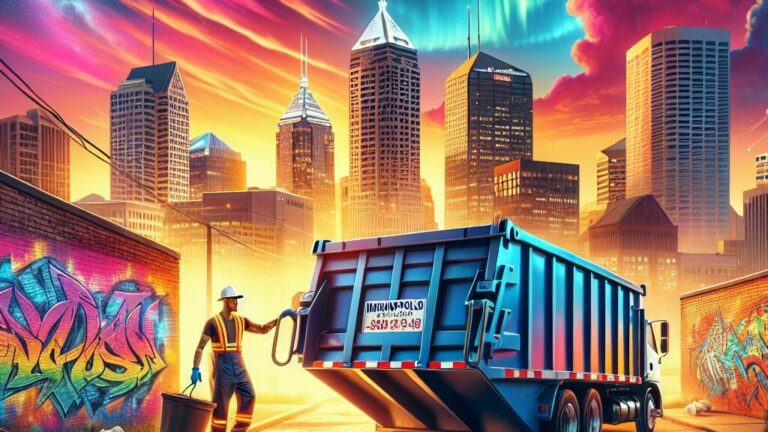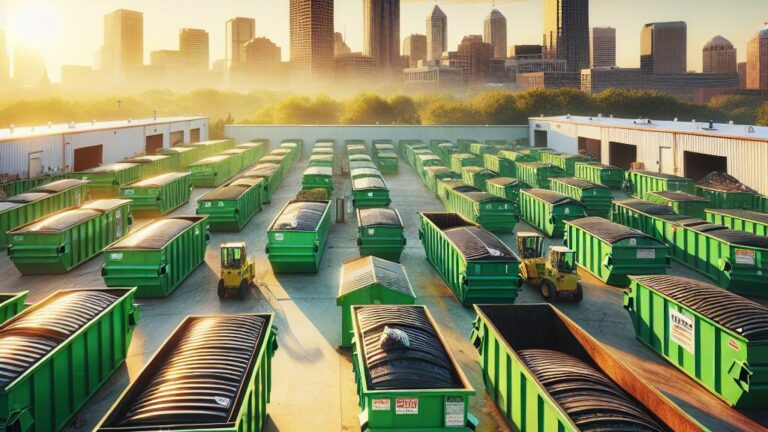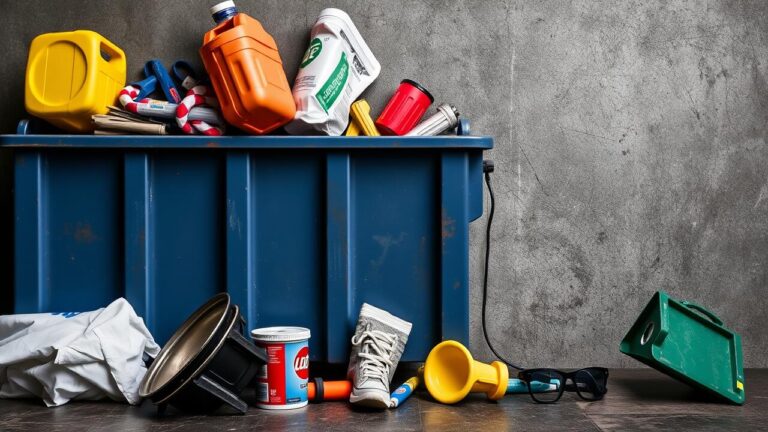Why You Should Consider a Construction Dumpster for Your Renovation
How to Rent a Construction Dumpster
Renting a construction dumpster begins with assessing your project’s needs. Determine the scale of your renovation and estimate the volume of waste you expect to generate. Many rental companies offer size guides, which can help you make an informed choice. It’s wise to evaluate the types of materials you will be disposing of, as certain items may require special handling or may not be allowed in standard dumpsters.
After identifying the right size, research local rental companies. Read reviews and compare prices to find a reliable provider. Ensure you understand the rental terms, including any weight limits and additional fees. Once you have selected a company, contact them to discuss your requirements. Schedule delivery at a convenient time to facilitate easy access for your project.
Steps to Secure Your Rental Efficiently
Before renting a construction dumpster, it’s essential to evaluate the specific needs of your renovation project. Calculate the estimated volume of debris and determine the type of materials you will be disposing of. This information aids in selecting the right size and type of dumpster. Research local rental companies and compare their offerings, including size options, rental duration, and pricing. Reading customer reviews can provide insight into the reliability and reputation of each provider.
Once you have selected a rental company, contact them to confirm availability and secure your dumpster rental. Provide all necessary details, such as the length of the rental period and the specifics of the materials being disposed of. Be prepared to discuss delivery and pick-up logistics. This includes identifying a suitable location for the dumpster that complies with local regulations. Confirm the total cost and inquire about any potential additional fees to avoid surprises later on.
Common Misconceptions
Many people believe that renting a construction dumpster is overly complicated and time-consuming. In reality, the process is straightforward and can often be completed in just a few minutes. Companies that offer dumpster rentals typically have user-friendly websites. Customers can find all necessary information, including pricing, sizes, and availability, making the rental process much more accessible than assumed.
Another common myth surrounds the idea that dumpster rentals are only for large construction projects. Homeowners engaging in smaller renovations often feel they can manage debris without a dumpster. However, even minor projects can generate substantial waste, and using a dumpster can alleviate the hassle of cleanup. Having a designated spot for construction materials and debris enhances organization and can lead to a more efficient renovation experience.
Clearing Up Myths About Dumpster Rentals
Many homeowners avoid renting dumpsters due to misconceptions about cost and complexity. A common myth is that renting a dumpster is prohibitively expensive. However, prices vary based on size, rental duration, and local waste management regulations. For many renovation projects, the cost of renting a dumpster can actually save money by reducing the risk of fines associated with improper disposal of debris.
Another prevalent misunderstanding is the belief that dumpster rentals are cumbersome and difficult to arrange. In reality, the rental process is straightforward. Most companies offer easy online booking and prompt delivery, eliminating the hassle often associated with waste removal. Understanding these aspects can help homeowners feel more confident about utilizing this resource for their renovation needs.
Safety Benefits of Using a Dumpster
Using a construction dumpster significantly enhances safety on job sites. It provides a designated area for debris and waste, which helps keep the workspace organized. When materials are scattered, the risk of trip hazards increases. A dumpster eliminates this danger by providing a single location for all construction refuse, allowing workers to navigate the site more easily.
Additionally, proper waste disposal reduces the likelihood of injuries associated with handling sharp or hazardous materials. With a designated dumpster, workers can dispose of materials like broken glass, nails, or chemicals efficiently. This practice not only protects workers but also minimizes the risk of accidents for anyone passing by the job site.
Reducing Hazards on the Job Site
A well-placed construction dumpster can significantly diminish the risk of accidents on a job site. By providing a centralized location for debris and waste, it minimizes the chances of tripping hazards. Workers can easily dispose of materials rather than leaving them scattered around, which helps maintain a cleaner and more organized environment. Additionally, having a designated area for waste ensures that sharp objects and heavy materials do not obstruct workspaces, reducing the likelihood of injuries.
Utilizing a dumpster also encourages proper disposal practices, which can further enhance safety. When workers have a convenient option for disposing of junk, they are less likely to resort to unsafe methods. This practice decreases the number of items that may end up in inappropriate places, such as public roadways or neighboring properties. As a result, employing a construction dumpster not only streamlines project workflow but also contributes to overall safety measures on-site.
Placement and Accessibility Tips
When renting a construction dumpster, the location plays a crucial role in its usage and efficiency. Select an area that provides easy access for both the dumpster rental company and your team. Consider placing the dumpster on a flat surface to avoid tilting. Ensure that the area is free of overhead obstructions such as branches or power lines. This will simplify the delivery and pickup process, minimizing complications.
Accessibility is equally important to maintain a smooth workflow. Avoid mounting the dumpster on a slope, as this can cause difficulties when loading debris. Establish a clear path for transporting waste to the dumpster, and make sure the surrounding area is well-lit to enhance safety. Taking time to evaluate these factors can save you time and headaches during the renovation process.
Ensuring Efficient Use of Space
Proper placement of a construction dumpster can significantly enhance both workflow and safety at your renovation site. Positioning the dumpster close to the area where materials will be discarded minimizes the distance workers must travel to dispose of debris. This convenience not only speeds up the cleaning process but also helps maintain a tidy work environment. Consider access routes for heavy vehicles, ensuring that the path is clear and wide enough for easy maneuvering.
Additionally, take into account the volume of waste generated during the project. Selecting a dumpster size that accommodates your expected debris ensures that workers do not have to make frequent trips to empty it. Overfilling a dumpster can lead to potential hazards, such as falling materials or blockages. Therefore, assessing both the size and placement of the dumpster ahead of time contributes to a more organized and efficient renovation experience.
FAQS
What is a construction dumpster?
A construction dumpster is a large container specifically designed to hold waste and debris generated from renovation or construction projects. They come in various sizes to accommodate different amounts of waste.
How do I rent a construction dumpster?
Renting a construction dumpster typically involves contacting a waste management company, selecting the appropriate size for your project, and scheduling a delivery. You may need to provide details about the type of materials you’ll be disposing of and how long you need the dumpster.
What are some common misconceptions about dumpster rentals?
Common misconceptions include the belief that dumpsters are only for large construction projects, that they are too expensive, or that they require complicated permits. In reality, dumpsters can be rented for projects of all sizes, and many companies offer affordable options.
What safety benefits does using a dumpster provide?
Using a dumpster can significantly reduce hazards on the job site by keeping debris contained and organized, minimizing trip hazards, and ensuring that potentially dangerous materials are disposed of properly.
Where should I place the dumpster for optimal use?
The dumpster should be placed in a location that is easily accessible for both delivery and pick-up while also being convenient for workers to dispose of debris. Consider the layout of your site and ensure that the area is clear of obstacles and away from traffic.







